
Heretaunga is a former New Zealand parliamentary electorate, in the city of Upper Hutt, that existed from 1954 until 1996.

Heretaunga is a former New Zealand parliamentary electorate, in the city of Upper Hutt, that existed from 1954 until 1996.
The First Labour Government was defeated in the 1949 election and the incoming National Government changed the Electoral Act, with the electoral quota once again based on total population as opposed to qualified electors, and the tolerance was increased to 7.5% of the electoral quota. There was no adjustments in the number of electorates between the South and North Islands, but the law changes resulted in boundary adjustments to almost every electorate through the 1952 electoral redistribution; only five electorates were unaltered. [1] Five electorates were reconstituted and the Heretaunga electorate was newly created, and a corresponding six electorates were abolished; all of these in the North Island. [2] These changes took effect with the 1954 election. [3]
The Heretaunga electorate was urban and was based on Heretaunga, a suburb of Upper Hutt in the northern Hutt Valley. Other places included Haywards and Birchville. [4]
The electorate originated in 1954, and lasted to 1996, when with the introduction of MMP it was replaced by Rimutaka.
In the 1951 election, Upper Hutt had belonged to the Otaki electorate, and the National Party's incumbent Member of Parliament, Jimmy Maher had defeated the Labour' Party's candidate, Phil Holloway. In the 1954 election, Upper Hutt belonged to the newly-formed Heretaunga electorate, and Holloway stood against National's Allan McCready (Maher's son-in-law) and won decisively. [5]
Up to 1990 when Peter McCardle won the seat for National, the Labour Party held Heretaunga. In 1993, McCardle narrowly held the seat against a challenge from Labour candidate Heather Simpson (who went on to become Helen Clark's Chief of Staff, known as H2 – Clark was H1 [6] ). Subsequently, McCardle left the National Party in 1996 and joined New Zealand First.
Key
| Election | Winner | |
|---|---|---|
| 1954 election | Phil Holloway | |
| 1957 election | ||
| 1960 election | Ron Bailey | |
| 1963 election | ||
| 1966 election | ||
| 1969 election | ||
| 1972 election | ||
| 1975 election | ||
| 1978 election | ||
| 1981 election | Bill Jeffries | |
| 1984 election | ||
| 1987 election | ||
| 1990 election | Peter McCardle | |
| 1993 election | ||
| (Electorate abolished in 1996; see Rimutaka) | ||
| Party | Candidate | Votes | % | ±% | |
|---|---|---|---|---|---|
| National | Peter McCardle | 7,981 | 41.15 | -2.53 | |
| Labour | Heather Simpson | 7,149 | 36.86 | ||
| Alliance | Brendan Tracey | 2,663 | 13.73 | ||
| NZ First | Gary Logan | 772 | 3.98 | ||
| Christian Heritage | Geoff Hounsell | 616 | 3.17 | ||
| McGillicuddy Serious | Rick Sahar | 137 | 0.70 | ||
| Defence Movement | Hilda Mendoza | 32 | 0.16 | ||
| Independent | Michael Avanti | 43 | 0.22 | ||
| Majority | 832 | 4.29 | -1.66 | ||
| Turnout | 19,393 | 86.27 | -0.01 | ||
| Registered electors | 22,477 | ||||
| Party | Candidate | Votes | % | ±% | |
|---|---|---|---|---|---|
| National | Peter McCardle | 8,234 | 43.68 | ||
| Labour | Bill Jeffries | 7,112 | 37.73 | -16.82 | |
| Green | S Miller | 1,194 | 6.33 | ||
| NewLabour | Kevin Boyd | 1,000 | 5.30 | ||
| Christian Heritage | John Allen | 927 | 4.91 | -35.76 | |
| Independent | S Cochrane | 218 | 1.15 | ||
| Democrats | Bill Henderson | 164 | 0.87 | -3.90 | |
| Majority | 1,122 | 5.95 | |||
| Turnout | 18,849 | 86.28 | -1.07 | ||
| Registered electors | 21,844 | ||||
| Party | Candidate | Votes | % | ±% | |
|---|---|---|---|---|---|
| Labour | Bill Jeffries | 10,037 | 54.55 | +2.32 | |
| National | John Allen | 7,483 | 40.67 | ||
| Democrats | Bill Henderson | 878 | 4.77 | +1.70 | |
| Majority | 2,554 | 13.88 | -9.45 | ||
| Turnout | 18,398 | 87.35 | -6.04 | ||
| Registered electors | 21,060 | ||||
| Party | Candidate | Votes | % | ±% | |
|---|---|---|---|---|---|
| Labour | Bill Jeffries | 10,155 | 52.23 | +4.55 | |
| National | Anna MacFarlane | 5,618 | 28.89 | ||
| NZ Party | Derek Spence | 3,072 | 15.80 | ||
| Social Credit | Bill Henderson | 597 | 3.07 | ||
| Majority | 4,537 | 23.33 | +11.33 | ||
| Turnout | 19,442 | 93.39 | +2.19 | ||
| Registered electors | 20,818 | ||||
| Party | Candidate | Votes | % | ±% | |
|---|---|---|---|---|---|
| Labour | Bill Jeffries | 8,872 | 47.68 | ||
| National | Ronald Palmer | 6,639 | 35.68 | ||
| Social Credit | Jim Ross | 3,094 | 16.62 | ||
| Majority | 2,233 | 12.00 | |||
| Turnout | 18,605 | 91.20 | -15.62 | ||
| Registered electors | 20,400 | ||||
| Party | Candidate | Votes | % | ±% | |
|---|---|---|---|---|---|
| Labour | Ron Bailey | 9,086 | 49.82 | -4.47 | |
| National | John Ward | 6,342 | 34.77 | ||
| Social Credit | Shane Kelly | 2,110 | 11.56 | ||
| Values | Mary Harpham | 699 | 3.83 | ||
| Majority | 2,744 | 15.04 | -13.22 | ||
| Turnout | 18,237 | 75.58 | -11.06 | ||
| Registered electors | 24,129 | ||||
| Party | Candidate | Votes | % | ±% | |
|---|---|---|---|---|---|
| Labour | Ron Bailey | 8,330 | 45.35 | -9.68 | |
| National | Julie Cameron | 7,994 | 43.52 | ||
| Social Credit | John Fowlds | 1,129 | 6.14 | +2.01 | |
| Values | Max Overton | 913 | 4.97 | ||
| Majority | 336 | 1.82 | -17.87 | ||
| Turnout | 18,366 | 86.64 | -3.99 | ||
| Registered electors | 21,198 | ||||
| Party | Candidate | Votes | % | ±% | |
|---|---|---|---|---|---|
| Labour | Ron Bailey | 8,281 | 55.03 | +4.16 | |
| National | John Schnellenberg | 5,317 | 35.33 | ||
| Values | Susan Northcote-Bade | 698 | 4.63 | ||
| Social Credit | John Fowlds | 622 | 4.13 | ||
| New Democratic | G W Healy | 129 | 0.85 | ||
| Majority | 2,964 | 19.69 | +10.70 | ||
| Turnout | 15,047 | 90.63 | -0.46 | ||
| Registered electors | 16,602 | ||||
| Party | Candidate | Votes | % | ±% | |
|---|---|---|---|---|---|
| Labour | Ron Bailey | 7,773 | 50.87 | -0.31 | |
| National | Ralph Miller | 6,398 | 41.87 | ||
| Social Credit | Barry Charles Ritzema | 930 | 6.08 | -6.52 | |
| Independent | Grace Mary Martin | 178 | 1.16 | ||
| Majority | 1,375 | 8.99 | -6.81 | ||
| Turnout | 15,279 | 90.17 | -2.04 | ||
| Registered electors | 16,943 | ||||
| Party | Candidate | Votes | % | ±% | |
|---|---|---|---|---|---|
| Labour | Ron Bailey | 8,572 | 51.18 | -2.17 | |
| National | Ian Ross | 5,925 | 35.38 | ||
| Social Credit | Barry Charles Ritzema | 2,111 | 12.60 | ||
| Independent | Raymond Logan Burgess | 138 | 0.82 | ||
| Majority | 2,647 | 15.80 | +1.89 | ||
| Turnout | 16,746 | 88.13 | -2.50 | ||
| Registered electors | 19,000 | ||||
| Party | Candidate | Votes | % | ±% | |
|---|---|---|---|---|---|
| Labour | Ron Bailey | 8,186 | 53.35 | -0.62 | |
| National | Bob Kimmins | 6,051 | 39.43 | ||
| Social Credit | Ting Lousich | 1,106 | 7.20 | ||
| Majority | 2,135 | 13.91 | -2.91 | ||
| Turnout | 15,343 | 90.63 | -0.29 | ||
| Registered electors | 16,929 | ||||
| Party | Candidate | Votes | % | ±% | |
|---|---|---|---|---|---|
| Labour | Ron Bailey | 8,265 | 53.97 | ||
| National | Vere Edward Hampson-Tindale | 5,689 | 37.14 | ||
| Social Credit | Anthony R. Wall | 1,360 | 8.88 | ||
| Majority | 2,576 | 16.82 | |||
| Turnout | 15,314 | 90.92 | -3.31 | ||
| Registered electors | 16,842 | ||||
| Party | Candidate | Votes | % | ±% | |
|---|---|---|---|---|---|
| Labour | Phil Holloway | 9,382 | 64.88 | +1.58 | |
| National | Allan McCready | 4,265 | 29.49 | -0.40 | |
| Social Credit | Robert Leslie Allan | 812 | 5.61 | ||
| Majority | 5,117 | 35.38 | +1.97 | ||
| Turnout | 14,459 | 94.23 | +1.97 | ||
| Registered electors | 15,343 | ||||
| Party | Candidate | Votes | % | ±% | |
|---|---|---|---|---|---|
| Labour | Phil Holloway | 9,583 | 63.30 | ||
| National | Allan McCready | 4,525 | 29.89 | ||
| Social Credit | Christopher Walter Tait | 1,029 | 6.79 | ||
| Majority | 5,058 | 33.41 | |||
| Turnout | 15,137 | 92.26 | |||
| Registered electors | 16,406 | ||||
Simpson then became director of policy and research for the parliamentary Labour Party before her elevation to chief of staff when she became Clark's 'enforcer' in the various political crises and scandals that arose as well as policy overseer. [...] She earned the nickname H2, as the second-most powerful woman in New Zealand, next to Helen Clark, H1.

Dunedin North is a former New Zealand parliamentary electorate, which returned one Member of Parliament (MP) to the New Zealand House of Representatives. It was established for the 1905 election and has existed since. It was last held by David Clark of the New Zealand Labour Party, who replaced the long-standing representative Pete Hodgson. It was considered a safe Labour seat, with Labour holding the seat for all but one term (1975–1978) since 1928. In the 2020 electoral boundary review, Otago Peninsula was added to the area to address a population quota shortfall; with this change the electorate was succeeded by the Dunedin electorate in the 2020 election.
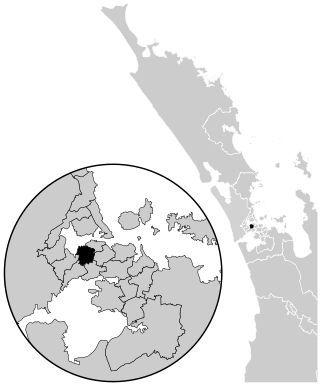
Mount Albert is a parliamentary electorate based around the suburb of Mount Albert in Auckland, New Zealand, returning one member of Parliament (MP) to the House of Representatives. It has elected only Labour Party MPs since it was first contested at the 1946 election. The incumbent MP is Jacinda Ardern, formerly Prime Minister of New Zealand, who was first elected in a 2017 by-election. The electorate was previously represented by David Shearer from 13 June 2009 to 31 December 2016; it was represented by Helen Clark from the 1981 general election until her resignation from Parliament on 17 April 2009.
Piako was a New Zealand parliamentary electorate established in 1946 and disestablished in 2008. It was last held by Lindsay Tisch MP from 2002 to 2008.
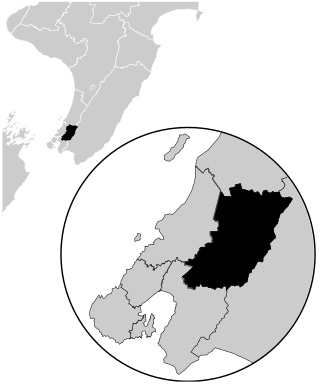
Remutaka is an electorate returning one member to the New Zealand House of Representatives. Since the 2008 general election, the seat has been represented by Chris Hipkins, who is currently serving as Prime Minister of New Zealand.

Rotorua is a New Zealand parliamentary electorate, returning one Member of Parliament to the New Zealand House of Representatives. It was first established in 1919, and has existed continuously since 1954. The current MP for Rotorua is Todd McClay of the National Party, who won the electorate in the 2008 general election from incumbent Labour MP Steve Chadwick.

Ōhāriu, previously spelled Ohariu and then Ōhariu, is a New Zealand parliamentary electorate returning one Member of Parliament to the House of Representatives. It first existed from 1978 to 1993, and was recreated for the 2008 election. In 2008, it was the successor to Ohariu-Belmont, first contested at the first mixed-member proportional (MMP) election in 1996. Through its existence Ohariu-Belmont was represented by Peter Dunne, leader of the United Future party. Dunne contested and won the recreated electorate in 2008. He announced on 21 August 2017, he would not be seeking re-election in the 2017 general election.
Brooklyn was a New Zealand parliamentary electorate in Wellington city from 1946 to 1954. It was represented by two prominent members of the Labour Party: Peter Fraser, who was Prime Minister (1940–1949), and Arnold Nordmeyer, who was later Minister of Finance (1957–1960).

Island Bay was a former New Zealand electorate, centred on Island Bay in the southern suburbs of Wellington. The electorate was formed in 1946 and dissolved in 1996.
Mount Victoria is a former New Zealand electorate, centred on the inner-city suburb of Mount Victoria in the southern suburbs of Wellington. It existed from 1946 to 1954, and was represented by one Member of Parliament, Jack Marshall.
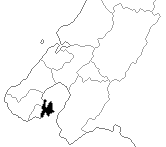
Miramar was a New Zealand parliamentary electorate in the south-eastern suburbs of Wellington. It was created in 1946, replacing Wellington East, and was replaced by Rongotai for the first MMP election of 1996.

Pencarrow is a former Parliamentary electorate in the lower Hutt Valley of New Zealand, from 1978 to 1996.
Petone is a former parliamentary electorate in the lower Hutt Valley of New Zealand, from 1946 to 1978. The electorate was represented by two Members of Parliament from the Labour Party.
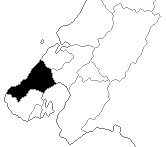
Onslow was a New Zealand parliamentary electorate, from 1946 to 1963, and then from 1993 to 1996 in the Wellington area. It was represented by three Members of Parliament.
Horowhenua was a New Zealand parliamentary electorate, from 1978 to 1996.
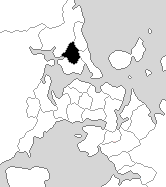
Glenfield was a New Zealand parliamentary electorate for four terms, from 1984 to 1996. It was represented by two members of parliament, first Judy Keall of the Labour Party, and then Peter Hilt of the National Party. Hilt defected to United New Zealand in 1995.

Eastern Hutt is a former New Zealand parliamentary electorate from 1978 to 1996. It was represented by two Labour MPs.

Western Hutt was a New Zealand parliamentary electorate from 1969 to 1996.
West Coast is a former New Zealand Parliamentary electorate, from 1972 to 1996.
Marlborough is a former New Zealand parliamentary electorate, in the Marlborough region at the top of the South Island. It existed from 1938 to 1996, and was represented by five Members of Parliament.

Remuera is a former New Zealand parliamentary electorate, in the city of Auckland. It existed from 1938, when it replaced the Parnell electorate, until 1996. It was consistently held by members of the National Party.